Zippori, Kibbutz Cabri, Rosh haNikra and then from Haifa to Tel Aviv
Friday, November 24, 2006
Janice & Ira Rothman, Reporting
We left Kibbutz Nof Ginosaur for a long day of travel to Zippori, Haifa and Tel Aviv. Walter told us Zippori means bird. The city of Zippori is perched like a bird on the hill. Zippori was the capital of the lower Galilee and a large trade area.
We climbed through the Arbel – a road in the middle of the mountains. Our drive took us through terrain similar to Southern California. There are no billboards on the roads in Israel.
The first stop at Zippori was the synagogue found five to six years ago which contained magnificent mosaics.
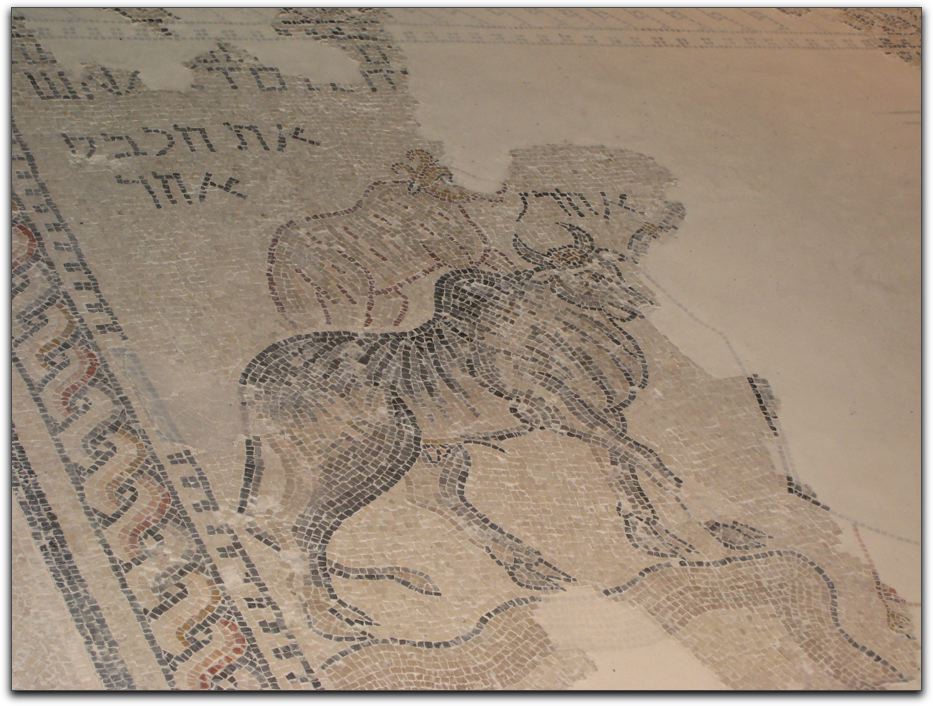 We learned that after the Great Revolt and the Second Revolt of Bar Kochbah, Jewish life moved to the Galilee. Contrary to some believers thinking, there are full faces of people in the mosaics. The common themes in the mosaics are lions guarding the door, scenes of righteous ancestors, the four seasons, wheel of zodiac, temple related items (that photo of the bull, above, is part of a scene of the consecration of Aaron in the Tabernacle), Ark of the Covenant – through the Torah with lions guarding and then the Ark. Walter explained that Kaballah had its roots in some of the depicted scenes.
We learned that after the Great Revolt and the Second Revolt of Bar Kochbah, Jewish life moved to the Galilee. Contrary to some believers thinking, there are full faces of people in the mosaics. The common themes in the mosaics are lions guarding the door, scenes of righteous ancestors, the four seasons, wheel of zodiac, temple related items (that photo of the bull, above, is part of a scene of the consecration of Aaron in the Tabernacle), Ark of the Covenant – through the Torah with lions guarding and then the Ark. Walter explained that Kaballah had its roots in some of the depicted scenes.
Except for Jerusalem, Zippori is mentioned more times in the Talmud than any other place.
Zippori is not a tel (not one civilization built upon another). The city had houses, mikvahs and statues. The city was abandoned in the middle ages. Ancient sarcophagi filled with stone make up the cornerstones of some buildings created by the Crusaders.
Next we viewed a spectacular residence from the Roman period. We viewed a magnificent mosaic from 200 CE. One part of the mosaic has a lady wearing pearl earrings with 32 different shades of color in her face. She is known as the “Mona Lisa of the Galilee”.
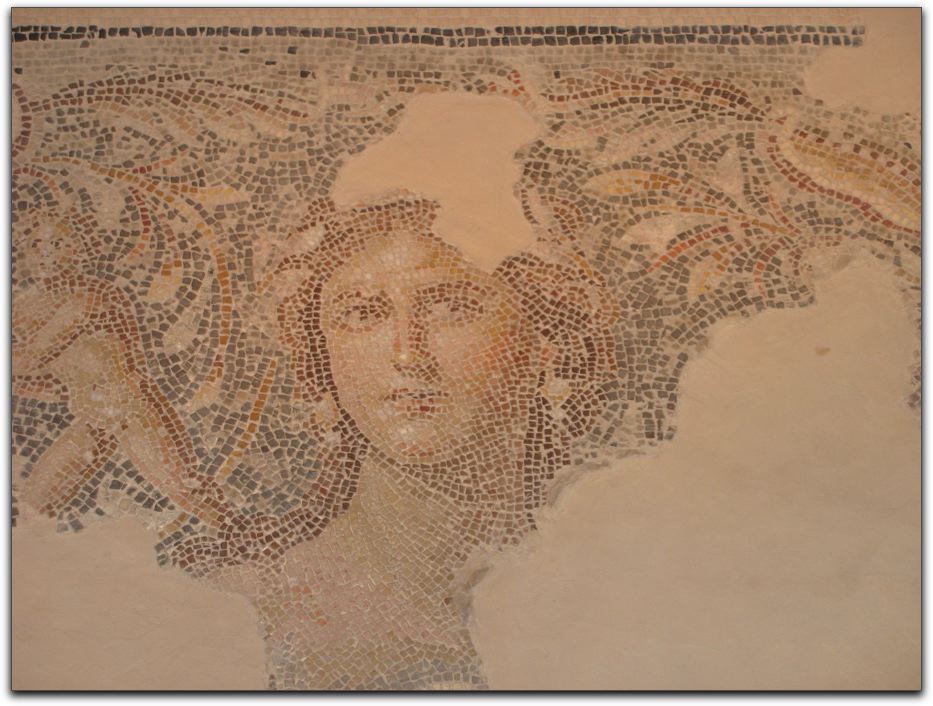
Some of the other scenes depicted in the mosaic showed what people were wearing or the costumes of the Roman Empire. We also saw scenes from the life of Dionysis, who is the Greek god who invented wine. We found pieces of ancient pottery, Roman glass and even stones from mosaics
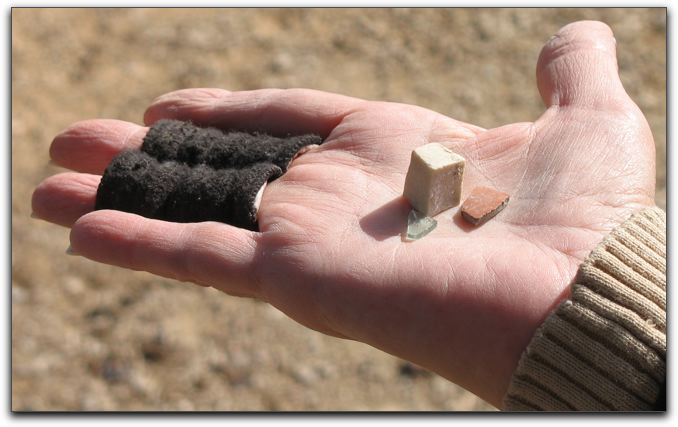
Along the path, Walter pointed out to us how unusual it was to see cactus growing. The Hebrew word for cactus is “Sabra”. Native Israeli’s are called Sabra’s. It is said that Sabra’s are tough on the outside and soft and sweet on the inside.
We walked through the lower city Forum and Marketplace viewing many more mosaics. Our last stop was presumably a school for mosaic making.
As we were driving along the road, Walter pointed out a special breed of cow in Israel. They are cross between Guernsey and Holstein cows properly called a Goldstein cow. They have been heard to say “nu”.
We stopped at Kibbutz Cabri for lunch. Jane, The Administrator of the Temple Adat Shalom, grew up on Kibbutz Cabri. Her parents Ora and Arnold, have lived there since 1970. We were treated to a delicious lunch and learned about the history of changes in the operation of the Kibbutz from a communal operation to a privatized style. We took our group picture that day with them in the courtyard in front of the dining room.
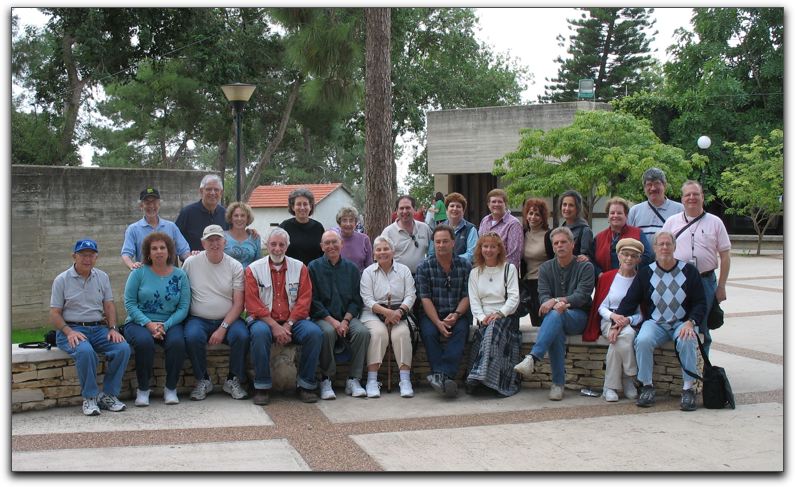
The TAS staff with Jane’s parents:
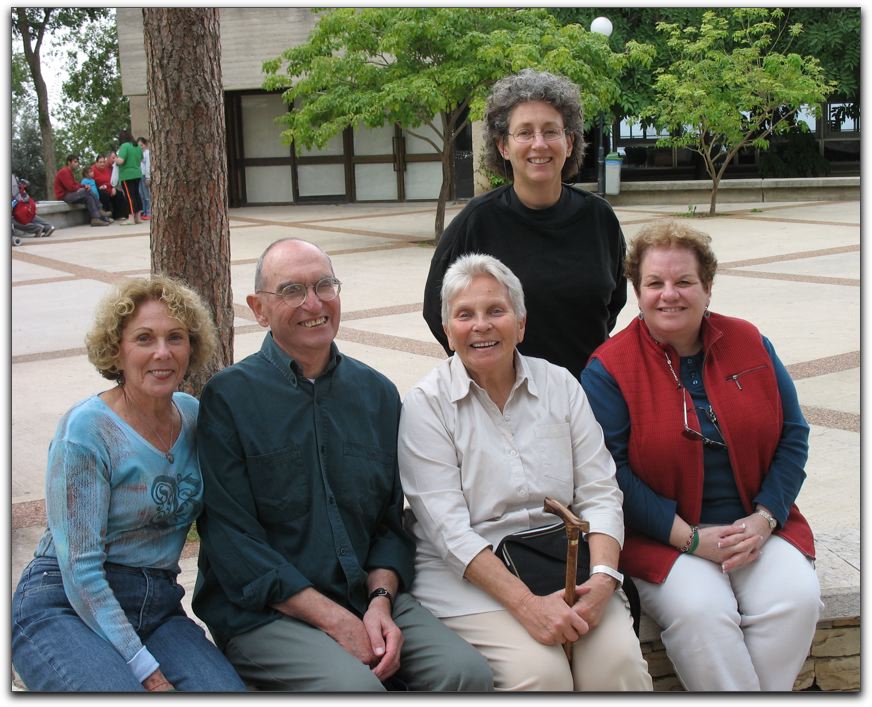
Next we traveled north towards the Mediterranean Sea on the coastal plain to Rosh Hanikra. Rosh Hanikra means head of the grottos. This is the first place where you cannot walk along the coast. During the British Mandate, the British wanted to have a train which ran from Haifa to Beirut. They cut a railroad line along the coast including the building of several tunnels. During the construction process, these grottos were discovered. We took a shaky cable car to descend the cliff down to the ocean. The cliff walls are made out of soft chalk and limestone which sit upon sandstone. Black spots on the wall were flint.
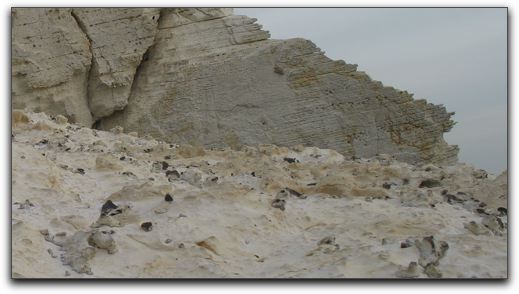
The railway stopped running during the 1948 War of Independence. Oops, Libbe and Debbie Savitzky got pigeon bird poop on them. Tradition suggests that this is a sure sign of good luck. We came out of the grottos to see a cliff formed in the shape of an elephant foot. Ironically during our walk, we saw a small animal known as a Syrian – Hyrax which is zoologically related to the elephant.
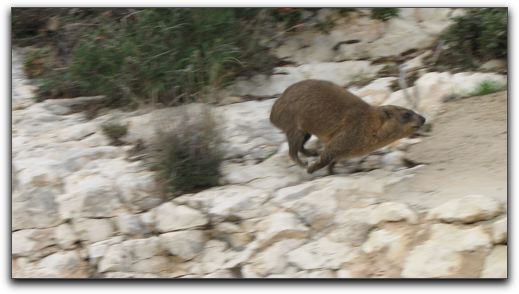
We took the cable car back and walked to the Israeli/Lebanon border gate.
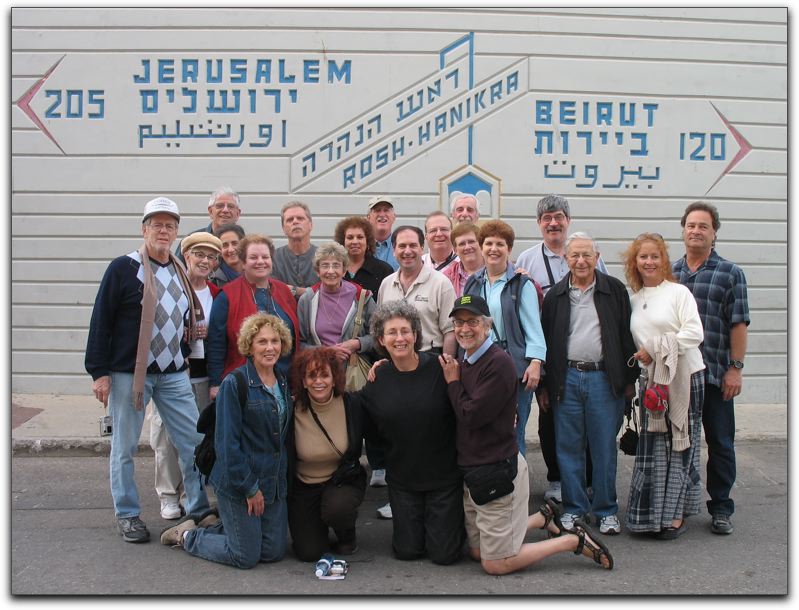
During our wild photo session, we saw several IDF soldiers giving us the evil eye when suddenly the loud speakers went off that caused us to run back to the bus for shelter.
We saw several sculptures along the road to Haifa that Walter told us commemorated the landing of banned immigrant boats during the British Mandate. We also saw flower vendors along the road for people to purchase flowers for Shabbat. Upon entering, the main part of Haifa, Itzhak had to swerve around a cow walking across the middle of the road that had broken loose from their corral. We stopped in downtown Haifa to look at the beautifully maintained Baha’i gardens for a Kodak moment.
We checked into the Carlton Hotel on the beach in Tel Aviv for a wonderful Shabbat dinner. This is the last Shabbat before some members of the group leave tomorrow.
back || next
An Exciting Adult Trip To Israel
Thursday, November 16, 2006 - Sunday, November 26
with a special option to visit the Red Rock City of Petra in Jordan
Sunday, November 26 - Thursday, November 30
Group Leaders: Rabbi Deborah Prinz & Rabbi Mark Hurvitz || Tour Guide: Walter Zanger || Tour Agent: Abrams Travel
Despite Everything - Davka
A Starting Point
 We learned that after the Great Revolt and the Second Revolt of Bar Kochbah, Jewish life moved to the Galilee. Contrary to some believers thinking, there are full faces of people in the mosaics. The common themes in the mosaics are lions guarding the door, scenes of righteous ancestors, the four seasons, wheel of zodiac, temple related items (that photo of the bull, above, is part of a scene of the consecration of Aaron in the Tabernacle), Ark of the Covenant – through the Torah with lions guarding and then the Ark. Walter explained that Kaballah had its roots in some of the depicted scenes.
We learned that after the Great Revolt and the Second Revolt of Bar Kochbah, Jewish life moved to the Galilee. Contrary to some believers thinking, there are full faces of people in the mosaics. The common themes in the mosaics are lions guarding the door, scenes of righteous ancestors, the four seasons, wheel of zodiac, temple related items (that photo of the bull, above, is part of a scene of the consecration of Aaron in the Tabernacle), Ark of the Covenant – through the Torah with lions guarding and then the Ark. Walter explained that Kaballah had its roots in some of the depicted scenes.





